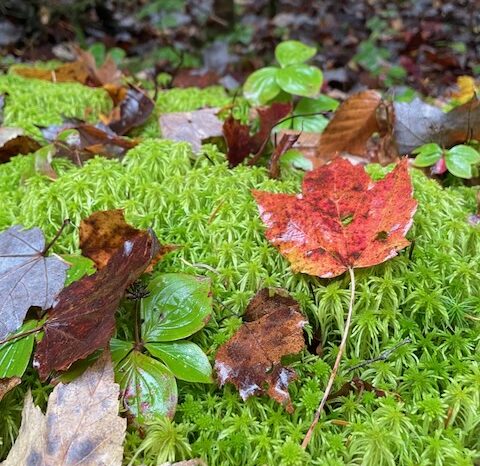The stark contrast and unending succession of the seasons in Maine has always intrigued me. Everything changes so quickly. Enjoy the vivid autumn colors in unexpected places as you look for edible plants in Maine to forage in fall. Taking a deeper look on a forest walk, you can see plants of all types turning color—often overlooked by the leaf peepers. My favorite showy autumn leaves can be found along the damp forest floor, a place overlooked in such a colorful time. The brilliant red and orange leaves of maples to the yellow shades of paper birch and poplar light the canopy of hardwood ridges afire for a couple weeks—the humble little plants below them last much longer.
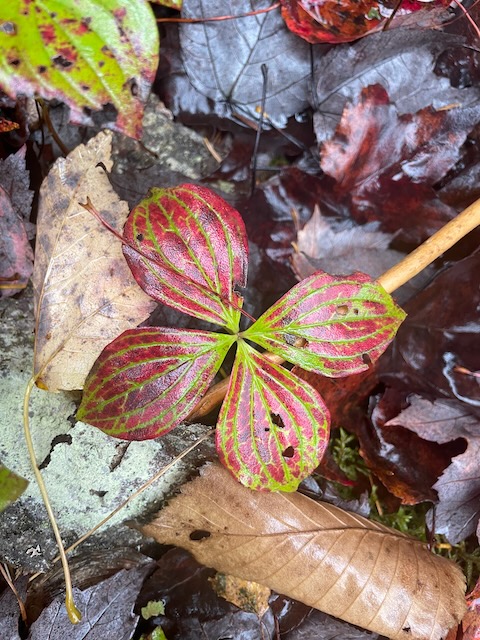
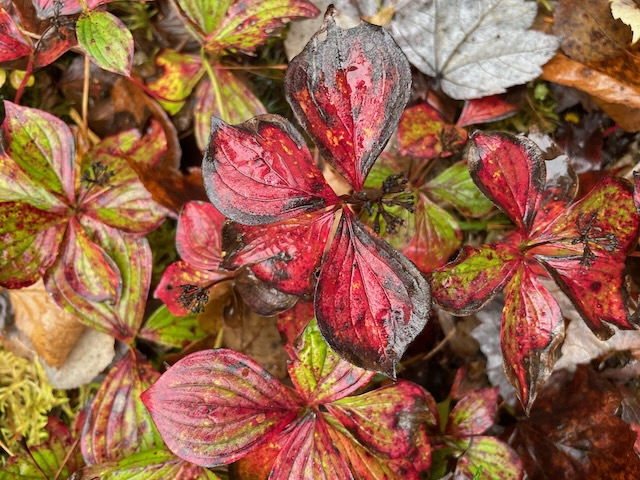
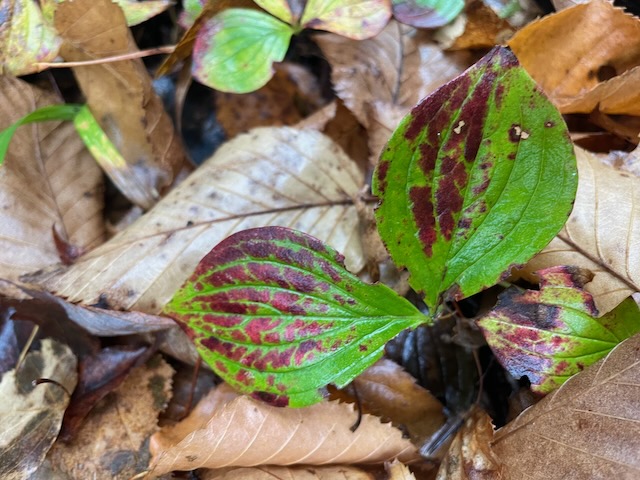
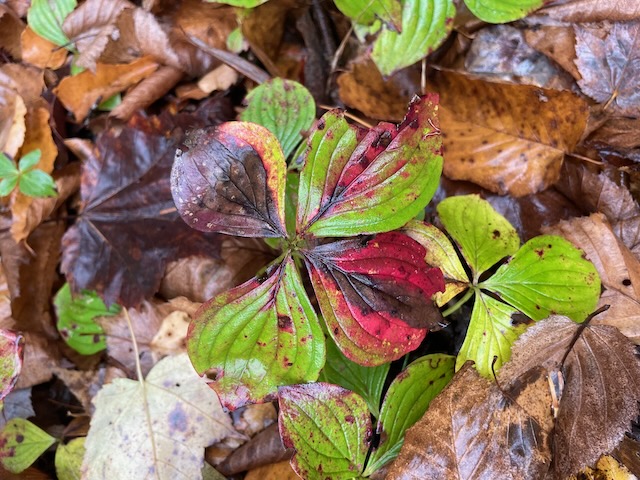
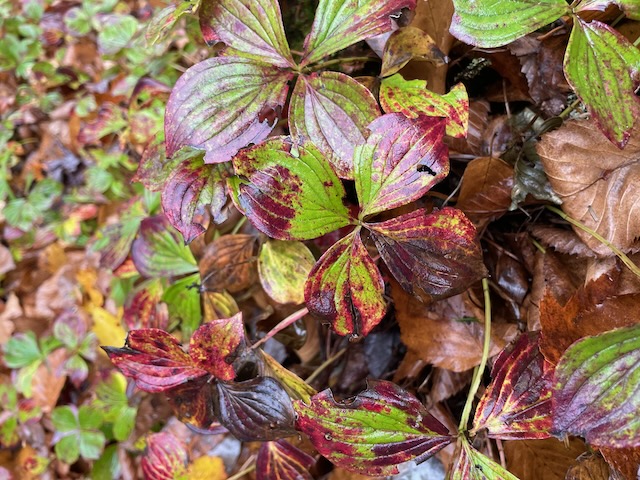
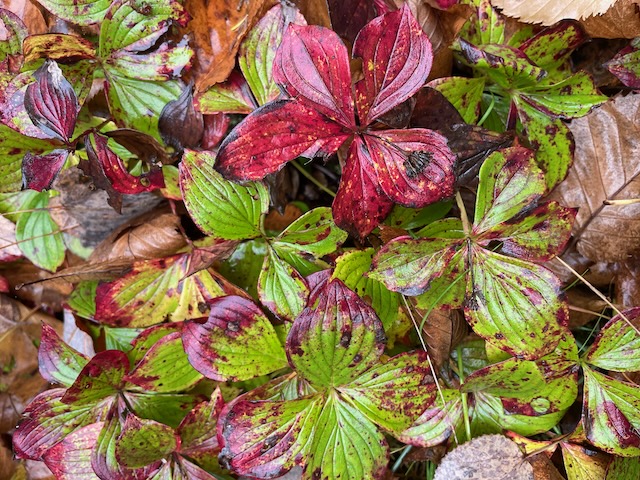
The leaves of bunchberry, the smallest of the dogwoods, turn color from green to a deep ruby red. They are often found in groups of hundreds, forming a nearly-perfect mat of glossy leaves at the same height. They vary widely in coloring. Some become a deep burgundy, nearly black along the margins—while others may not turn at all. Unlike most most leaves that turn color in our part of the world, it is rare they turn from green to red in any organized pattern. Often they are speckled, streaked, and even have hints of yellow. Their bright red berries—by now nibbled away—are edible but not overly flavorful. They are better known as an additive to jams, along with other wild berries, as bunchberries are high in pectin which helps jams to set. Bunchberry are wonderful example of edible plants in Maine to forage in fall just before the leaves begin to change.
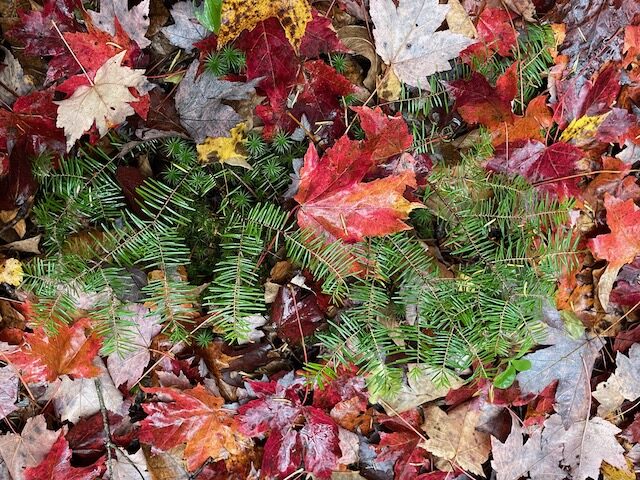
Bows of evergreen that dip low from mature trees poke back up through the seasonal lofty leaves of their deciduous neighbors. The shapes and angles of the branches and needles on this fir tree appear orderly in contrast to the layer of maple leaves distributed by a windstorm a day before. Their most tender tips can be nibbled on while wandering in the woods.
Fir tree tips are high in vitamin C and have a surprisingly citrus-like taste making them easy to ID edible plants in Maine to forage in fall.
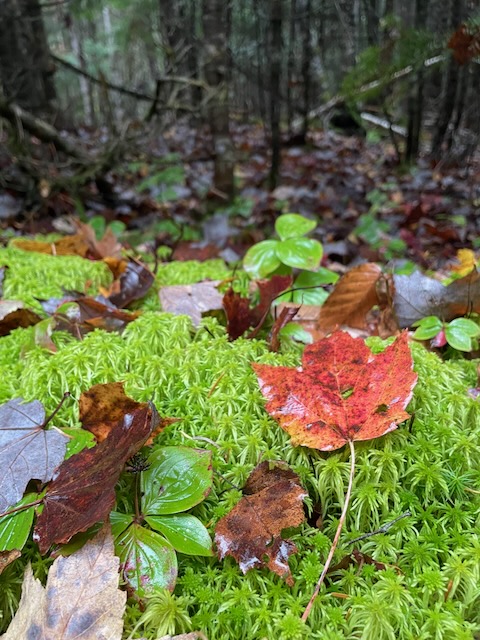

The vibrant spring green of peat moss give the brilliant leaves an extra pop with their complimentary colors. Beyond them, a stand of smaller thickly-grown spruce have an entirely different forest composition. It appears dismal compared to the vibrant colors. In just a couple months, they will look much the same tucked into the same blanket of snow. Upon a closer look even the drab forest beyond held the vivid crimson red of partridge berries. These little berries may be sparse on their evergreen vines, but they make an excellent trail snack and are very easy to ID plants in Maine to forage in fall. Their round evergreen leaves and woody stem creep along the forest floor. The berries are always single and sparse. About the time of the first frost they are most flavorful. I find them to taste like mild cranberries. Their leaves can be used as tea. Combined with bunchberries and a few fir tips—you’ll have a lovely jam all from plants in Maine to forage in fall.
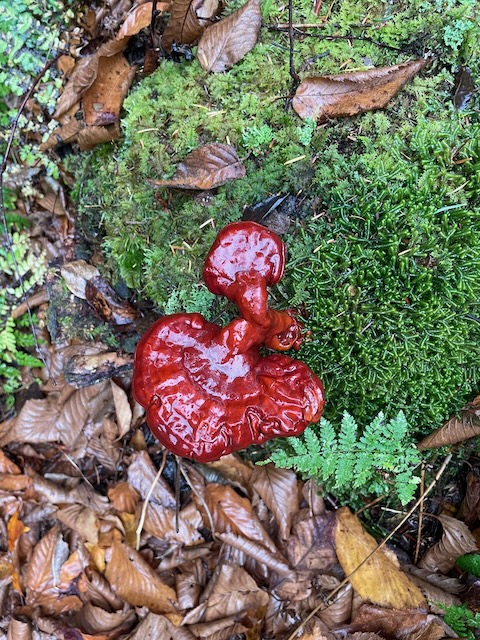
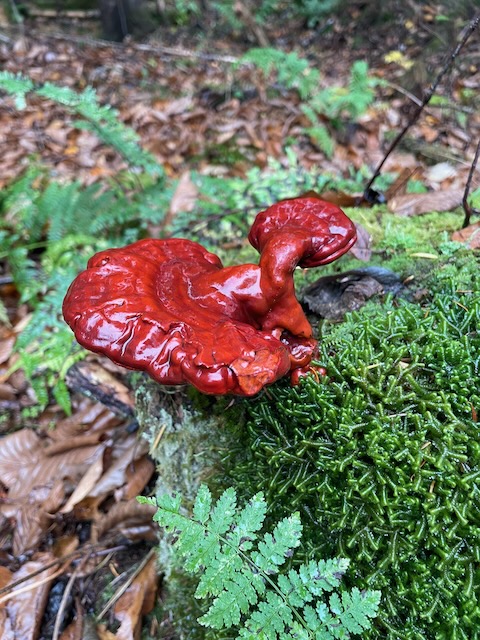
It’s where the least sun touches the forest floor and few leaves can penetrate the lush evergreen canopy that natures most vibrant autumn visitors can be found—bountiful fungus of all shapes and sizes. The hemlock varnish shelf mushroom above is a hard toadstool commonly known as Reishi. Solid Reishi specimens (with no holes drilled by insect activity) can be powdered by slicing them into smaller pieces, drying them, and grinding them. The resulting powder can be added into pies for the holidays, best paired with recipes that call for nutmeg or cinnamon. I personally prefer to use it in spring when I can trim the fleshy leading edge before it hardens and add it to a stir fry. That time of year it pairs best with trillium leaves and butter.
